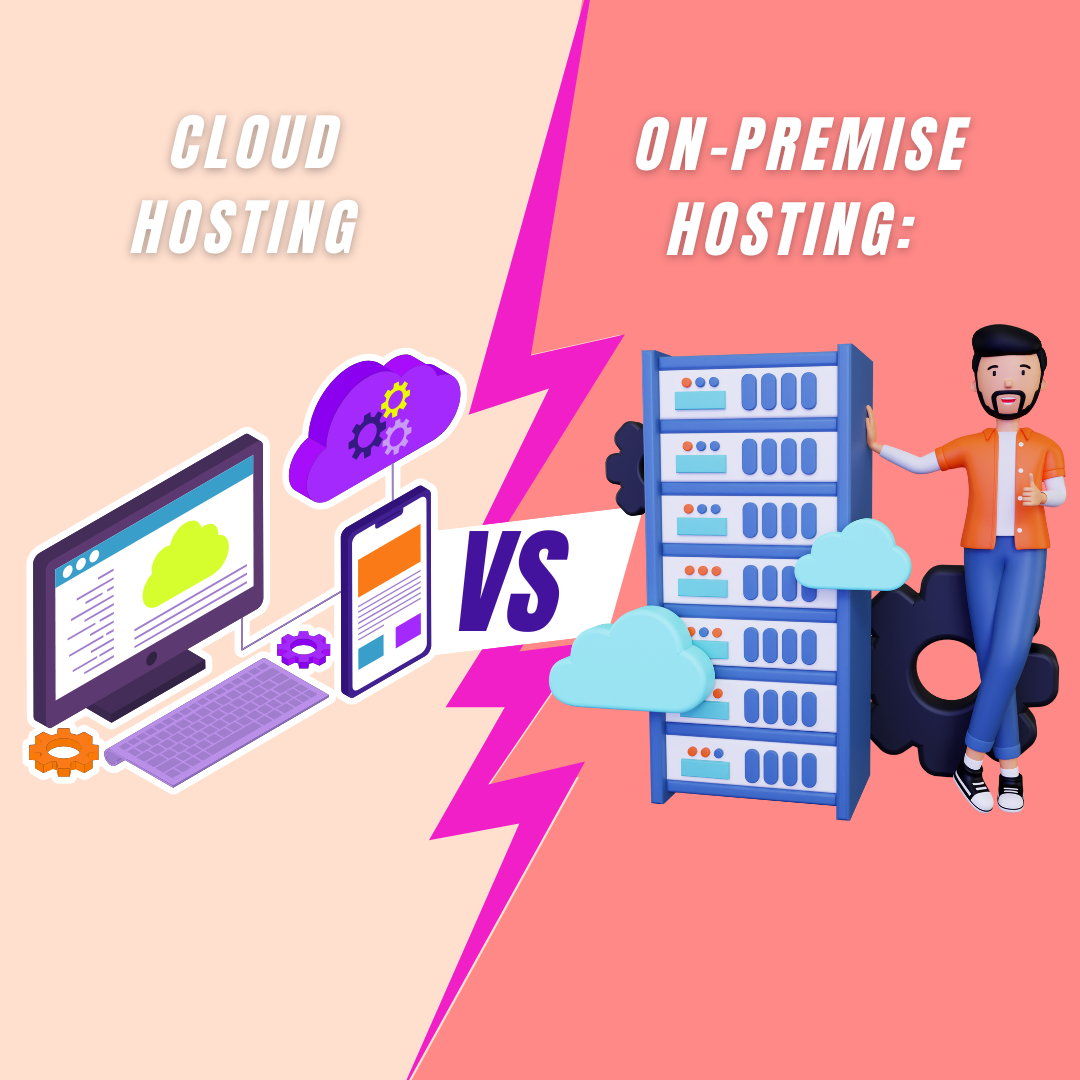One of the most important decisions you’ll make as a business owner or IT leader is where to host your data and applications in the cloud or on-premise. Today, businesses increasingly depend on technology to power their operations, manage data, and deliver services.
Choosing between cloud and on-premise hosting can significantly impact your company’s agility, costs, security posture, and scalability. This blog explores the pros and cons of each to help you determine which hosting solution best meets your business needs.
READ: How Cloud Server Hosting Simplifies Your IT Infrastructure
What is Cloud Hosting?
Cloud hosting refers to virtual servers hosted by third-party providers (like Kaluari, AWS, Microsoft Azure, or Google Cloud) to store and manage data, applications, and services. These servers are housed in remote data centers and accessed over the internet.
What is On-Premise Hosting?
On-premise hosting means your data and applications are hosted on servers within your physical office or organization’s premises. Your internal IT team manages, maintains, and secures these servers.
Key Differences Between Cloud and On-Premise Hosting
| Feature | Cloud Hosting | On-Premise Hosting |
|---|---|---|
| Infrastructure | Hosted and managed by a third-party provider | Owned and managed in-house |
| Cost Model | Subscription/pay-as-you-go | Capital expenditure (CapEx) upfront investment |
| Scalability | Instantly scalable on demand | Limited by physical hardware |
| Accessibility | Accessible from anywhere with internet | Restricted to internal network unless configured remotely |
| Security | Provider-managed; shared responsibility | Full control; entirely your responsibility |
| Maintenance | Managed by provider | Requires an in-house IT team |
| Updates & Upgrades | Automated by provider | Manual updates and upgrades |
| Disaster Recovery | Built-in backup and recovery features | Requires dedicated disaster recovery setup |
Advantages of Cloud Hosting
RELATED: The Benefits of Managed Server Hosting for Small Businesses
1. Flexibility and Scalability
Cloud hosting allows businesses to scale resources (CPU, storage, bandwidth) up or down based on demand. This makes it ideal for companies with fluctuating workloads or those expecting rapid growth.
2. Cost Efficiency
You only pay for what you use. Cloud hosting eliminates the need for heavy upfront hardware investments and ongoing maintenance costs, making it budget-friendly, especially for startups and SMEs.
3. Remote Access
Employees and stakeholders can access cloud-hosted applications from anywhere with an internet connection, enabling seamless remote work and collaboration.
4. Automatic Updates
Cloud service providers handle all updates and system upgrades, reducing your IT team’s workload and ensuring you’re always running the latest versions with optimal security.
5. Robust Disaster Recovery
Cloud platforms typically include automated backups and disaster recovery features, helping you minimize downtime and data loss during unexpected events.
MORE ON THIS: Merits of Cloud Server Storage
Advantages of On-Premise Hosting
1. Complete Control
With on-premise hosting, you have complete control over your servers, data, and infrastructure. You decide how everything is configured, secured, and maintained.
2. Data Security and Privacy
On-premise solutions may offer better data control and compliance with strict regulatory requirements for industries handling highly sensitive data (such as finance or healthcare).
3. Customization
Businesses with unique infrastructure needs can fully customize their servers, security protocols, and software to fit their exact requirements.
4. No Dependency on the Internet
On-premise systems can function within a local network even if the internet goes down, ensuring continuous internal operations.
Considerations When Choosing Between Cloud and On-Premise Hosting
– Budget
-
Cloud: Low upfront cost, ongoing monthly/annual payments.
-
On-Premise: High upfront cost for hardware, but potentially lower ongoing costs if well-managed.
– IT Resources
-
Cloud: Managed services require minimal in-house support.
-
On-Premise: A skilled IT team is needed for setup, monitoring, and maintenance.
– Data Sensitivity and Compliance
-
Cloud: Choose providers with robust compliance certifications (ISO, HIPAA, GDPR).
-
On-Premise: Full control can make compliance easier to enforce internally.
– Business Size and Growth Plans
-
Cloud: Ideal for growing businesses due to easy scalability.
-
On-Premise: Better for businesses with stable, predictable workloads.
– Downtime Tolerance
-
Cloud: SLAs typically guarantee high uptime and fast recovery.
-
On-Premise: Recovery time depends on your internal disaster recovery plan.
Hybrid Hosting: The Best of Both Worlds?
Some businesses opt for a hybrid hosting model, combining cloud and on-premise infrastructure. For example, sensitive customer data might be stored on-premise while customer-facing applications are hosted in the cloud.
This approach allows for:
-
Greater flexibility
-
Better cost management
-
Enhanced data control
However, hybrid solutions require careful planning and integration to avoid complexity and security loopholes.
Which Is Right for Your Business?
There’s no one-size-fits-all answer. The decision between cloud and on-premise hosting depends on your business goals, budget, security needs, and IT capabilities.
Choose Cloud Hosting If:
-
You want to reduce upfront IT costs
-
You need fast, scalable infrastructure
-
Remote access and collaboration are priorities
-
You prefer a hands-off approach to maintenance and upgrades
Choose On-Premise Hosting If:
-
You require complete control over your systems and data
-
You’re in a highly regulated industry
-
Your IT team can manage infrastructure efficiently
-
You prefer capital investment over long-term operational costs
No matter the choice, what’s most important is that your hosting environment supports your business needs today and in the future.
Contact our experts if you’re unsure which hosting model best suits your business. We’ll help you evaluate your needs and find a secure, scalable, cost-effective solution.




